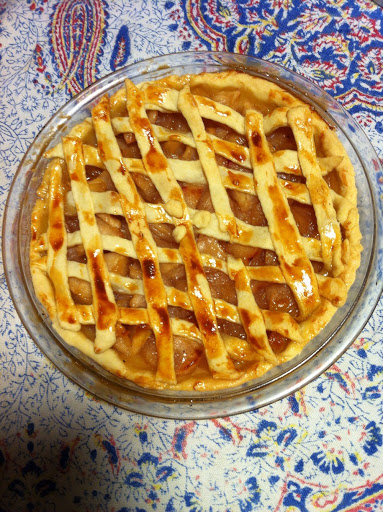Il y aura aussi un livre dessiné d'histoire de Sayama pour les petits, un squelette de mammouth, et des petits modèles qui montrent comment les gens ont fait du thé...

...du blé...
...et fait de la soie...
Très intéressant!
Après, on a cherché des gaufres et malhereusement n'en a pas trouvé, donc on a mangé des gâteaux au lieu d'eux (normalement ils servent une boule de glace avec, mais pour moi ils on prépare des fruit pour un dessert sans lactose!). Et du thé vert de Sayama, un produit régionale pour finir!
*** ** ***
We arrived at Iruma station at the stop for Inariyama Park. Interestingly enough, the station is inside the kouku jietai or Japan Self-Defense Air Force base. Iruma City is home to one of the two largest military bases in Japan. As you leave the station, right in front of you is Inariyama Park, where you'll find high school students from Sayama City High School (in the next city over) taking a run, kids out of school playing, and old men and ladies taking walks and making the most of the fresh air.
Today, my host mom and I came to see the museum (without knowing what the exhibition was going to be), and maybe even more, for the waffles! The exhibition was fantastic. They had lots of old Japanese artifacts on display. The butterfly collections made me feel like becoming an explorer or a naturalist! They also had on display a children's picture book of the history of Sayama City, a mammoth skeleton, and these little models showing how in the old days people grew rice and wheat and made silk. It was very interesting!
Afterward, we tried to get waffles, but unfortunately couldn't find them. Instead, we had cake (normally it's served with ice-cream, but they prepared oranges as a lactose-free dessert for me!). To finish, we had local Sayama-cha, green tea.
















